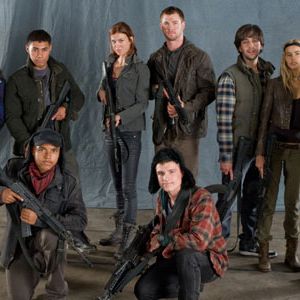
Last week, the remake of Red Dawn – which has been moldering on the shelf for two years after its studio, MGM, went into bankruptcy – finally got a release date from its latest distributor, Film District. The Chris Hemsworth film will come out on November 2, 2012, the weekend before Election Day, and considering the film’s original premise – the U.S. is invaded by China – this could be incredibly timely: The GOP presidential hopefuls have been busily talking tough about China, with likely candidate Mitt Romney promising to declare that country a currency manipulator on his first day in the White House. Yes, Red Dawn would be perfect zeitgeist fare … had the producers not completely reedited and dubbed the film to change the occupying villain to North Korea.
The Los Angeles Times reported in March that the film was reworked, but Vulture has learned that MGM did far more than just erase the Chinese Army uniform’s iconic Red Stars; they also jettisoned the film’s fascinating, of-the-moment premise. Production insiders tell us that the original version had China not so much invading as repossessing America after the U.S. government missed several debt payments and went into delinquency.
In the world of international conglomerates, topicality is solidly trumped by economics. “When we made the movie, it was very different circumstances,” explains an MGM insider. “We were owned by a hedge fund, and we could do what we liked.” But less than two months after the studio went bankrupt in December 2010, Sony Pictures took over distributing their finished films, and Chinese relations became far more important. “The truth of it is, no company that’s multinational can afford to piss off the Chinese,” says another MGM insider. (From now on, we’ll identify them as MGM 1 and MGM 2, to keep our studio spies straight.) China is the fifth-largest box office market outside of America, and its government strictly limits access to that market to barely twenty American pictures a year.
Under new marching orders, “everything that was interesting about the premise was kind of neutered to accommodate the new distributor,” says MGM 1. Out went the repo story line and the U.S. default on T-bills; in came a convoluted and implausible reworking – all by editing, CGI, and dubbing, no reshoots – that has North Korea becoming the lead invader, with Russia and China backing them.
“With the first cut, we heard [that we would have problems in China] through these pseudo-government Chinese intermediaries and organizations” says MGM 2. “But after the changes, nothing.” This MGM insider insists that the film is testing reasonably well, in spite of the complete after-the-fact plot revise: “It was always more about the teens, who are more interested in ‘Who’s cute?’ and ‘Can I get laid?’ The film never once talks about how [the war] started – it’s done with voice-over that says, ‘There’s a problem in the straits of China and Japan.’”
However, the question remains as to what greater audience Red Dawn could have had in the U.S. if they’d kept the original version; the debt-fueled-crisis premise might have been red meat for red states. As MGM 1 notes, “I don’t know if the audience will miss what wasn’t there, but it definitely would have been a great opportunity to create a giant splash in the [U.S.] red states, because it was such a cautionary tale.” He adds with a sigh, “This is Hollywood. ‘It takes a village’ – both to make a good movie, and unmake one, too.”

